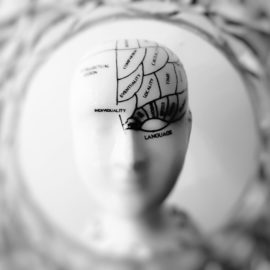

This article is an excerpt from the Shortform book guide to "Come As You Are" by Emily Nagoski. Shortform has the world's best summaries and analyses of books you should be reading.
Like this article? Sign up for a free trial here .
What is the role of context in sexual desire? How does context or environment affect arousal?
Context or environment plays an important role in evoking sexual desire. What you may find arousing in some circumstances can have no effect in others (or even have the opposite effect).
Here is how context interacts with our brains and how this interaction affects our sexual response, especially for women.
How Sexual Context Works
Contextual factors, such as who we’re with, potential risks, and even our mood, can make something that’s normally a turn-on have little effect (or even the opposite effect) on our arousal. Take the example of your partner’s cologne: Under normal circumstances, the scent may be arousing. But imagine that one day, you have an uncomfortable encounter with a coworker who happens to wear the same cologne. From that point on, you may no longer feel the same level of arousal when exposed to that scent—it may even repulse you.
But why exactly does this happen and how does the process work? Research shows that it’s all about how our brain processes the environment around us: If we perceive our environment to be comfortable and safe, Nagoski says our brain will almost always respond to sex-related stimuli with curiosity, seeing the stimuli as pleasurable enough to warrant desire. On the other hand, if we perceive our environment to be stressful or dangerous, Nagoski says our brain will almost always respond to stimuli with avoidance and anxiety, even if the stimuli would usually arouse us.
Nagoski argues that understanding this mechanism is important because it offers a scientific explanation for why sex might not feel great all the time. It doesn’t mean that there’s something wrong with you—it simply means that the context isn’t quite right.
| Sexual Context and Its Influence on the Brain Here, Nagoski’s discussion focuses on the role of context in sexual response. However, context influences far more than our brain’s perception of sexual stimuli—in reality, it shapes the way we process all types of information. One of the simplest examples of context’s role in information processing is optical illusions. Depending on the way objects appear, our perception of them changes. For example, in the famous Ebbinghaus illusion, two separate circles are enclosed by their own ring of circles: One is surrounded by large circles, and the other by small circles. Although the two center circles are exactly the same size, our brain doesn’t see them that way because of the influence of the size of the circles that surround them—the circle enclosed by large circles appears smaller than the circle enclosed by small ones. Another demonstration of the power of context is the way it influences our interpretation of emotions through facial expressions. For instance, we’re likely to perceive the emotion behind a photo of a crying woman as sadness. However, if we were to add context by broadening the scope of the photograph to reveal a man on one knee with an engagement ring in hand, our interpretation of the emotion would change to happiness. With these examples, it’s easier to see how context could affect our perception of sexual stimuli. Just like the size of a circle or the emotion behind a facial expression, the way our brain interprets something like the smell of cologne is largely dependent on the context in which it appears. |
Context’s Effect on Women
Although context plays a role in everyone’s sexual response, Nagoski states that research shows that women are more sensitive to it than men, especially mood and relationship factors.
(Shortform: Research suggests that the reason for women’s higher level of sensitivity to context relates to parental investment theory, which predicts that the parent who’s more invested in raising their offspring will be more sexually selective. In other words, because women have historically taken a more active role in raising their children than men, they’ve developed a higher sensitivity to contextual factors that might inhibit sexual response, such as having sex without a condom).
Although Nagsoki claims that on average women respond best to contexts that are low stress, high affection, and explicitly erotic, there’s variation from woman to woman and situation to situation.
(Shortform note: In addition to the contexts that Nagoski mentions, research shows that the type of relationship is also a major factor affecting sexual arousal and enjoyment. One study showed that, in general, women in committed rather than casual relationships have higher sexual pleasure and satisfaction.)
Determining Environments That Work (and Don’t Work) for You
While context has the potential to disrupt our desire for sex, Nagoski reassures us that by changing aspects of our environment—such as the circumstances or our state of mind—we can still create good opportunities for uninhibited sexual arousal.
To do this, however, Nagoski argues we must understand which particular environmental factors, both positive and negative, affect us most strongly. She says the most effective way to determine your best and worst environments is to reflect on your past experiences and focus on the details of what made those experiences so pleasurable or unappealing: things like your mental state, the setting, and the nature of your relationship with your partner. For example, have your best sexual experiences always happened when you were in a comfortable and familiar place?
(Shortform note: While Nagoski suggests reflecting on your past experiences to determine your best and worst environments, she doesn’t acknowledge how difficult it can be to recall the details of those experiences—particularly if they were a while ago—or offer any alternative strategies. One solution to this memory obstacle could be to document your sexual experiences, both good and bad, in a journal shortly after they occur. By recording this information over time, you can easily access details without having to remember them and identify patterns that can help you determine which factors create the most and least enjoyable sexual experiences.)
Once you’ve identified which factors contribute to your best and worst environments, Nagoski advises considering what you could do to make positive factors occur more frequently and negative factors less frequently.
| Changing Your Environment: Easier Said Than Done The overall applicability of Nagoski’s advice in this section is arguably limited. While we can change some of the factors making up our environment fairly easily, such as the setting we’re in and the type of sex we have, many others are largely outside of our control. For example, if the main factor affecting your sexual desire is a battle with depression, it could take a significant amount of time to overcome—weeks, months, or even years depending on the individual and access to resources. What’s more, in 20–30% of cases, depression is a long-term illness that can’t be entirely cured, even through treatment. Similarly, certain life circumstances may act as inhibiting factors that are difficult or impossible to change. For instance, if you’re taking care of a terminally ill loved one, it’s likely that such a large responsibility would significantly impact both your physical and emotional capacity for sex due to factors such as time limitations, lack of privacy, stress, and even grief. Overall, no matter our level of effort, certain changes to our mental state, relationship, and life circumstances may only be possible over a long period—if at all. |

———End of Preview———
Like what you just read? Read the rest of the world's best book summary and analysis of Emily Nagoski's "Come As You Are" at Shortform .
Here's what you'll find in our full Come As You Are summary :
- Why women should change the way they talk, think, and feel about their sexuality
- A look at the misinformation and harmful cultural messaging surrounding sex
- A discussion around the individual experiences of arousal, desire, and orgasm






